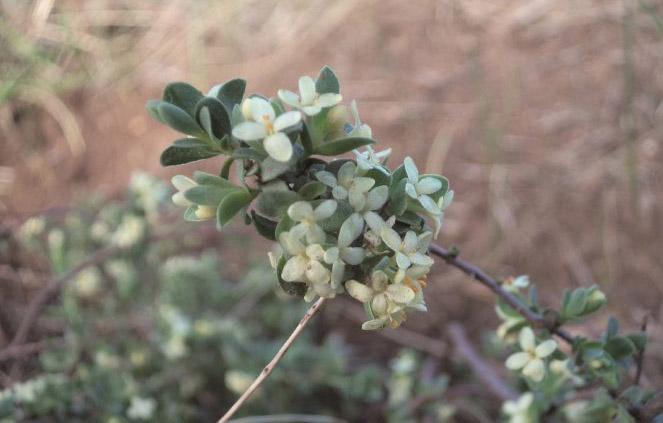You would think protecting lives and property would be enough on the plate of our members, but brigades in western and central Victoria are also turning their hand at saving critically endangered plant species.

In a joint operation involving CFA, Landcare, DELWP, local government and TAFE students, the spiny rice-flower shrub population was given a much-needed boost near Marong in central Victoria.
The spiny rice-flower (Pimelea spinescens ssp. spinescens), a small shrub, is mainly a native grassland species only found in Victoria, and is one Australia’s most threatened plants. It thrives when burnt every two to five years. When burnt, the aboveground foliage dies but it has a large lignotuberous root which stores energy so that it can re-sprout post-fire.
After a fire, flowering and seed production is prolific and the reduction of surrounding grasses and leaf litter helps germination.
Brigades in western Victoria had already been actively involved in conservation efforts for the maintenance, improvement and recovery of the spiny rice-flower for many years through their roadside and rail corridor burning. A rare woodland site near Marong was surveyed by DELWP and students from Bendigo TAFE who recorded 6,000 plants that were decades old but in need of a burn due to their condition.

This is where our members played a part. Marong, Lockwood, Eaglehawk and Golden Square brigades gave their time and expertise to burn the site to help the species.
Five patches were outlined, two for control and three for burning. The burns were conducted in conditions that meant minimum impact on trees, but provided sufficient fire to remove aboveground shrubs, grasses and fine fuels.
This ecological approach to burning has resulted in vigorous re-sprouting of spiny rice-flower plants and, over the next six months, seed germination should begin.
Marong Fire Brigade captain Tim Scott said, “It was a great project to be part of. We don’t always get to see fire used in this way, and contributing to saving an endangered species is a really good feeling for everyone involved”.
Author: Danielle Scorer